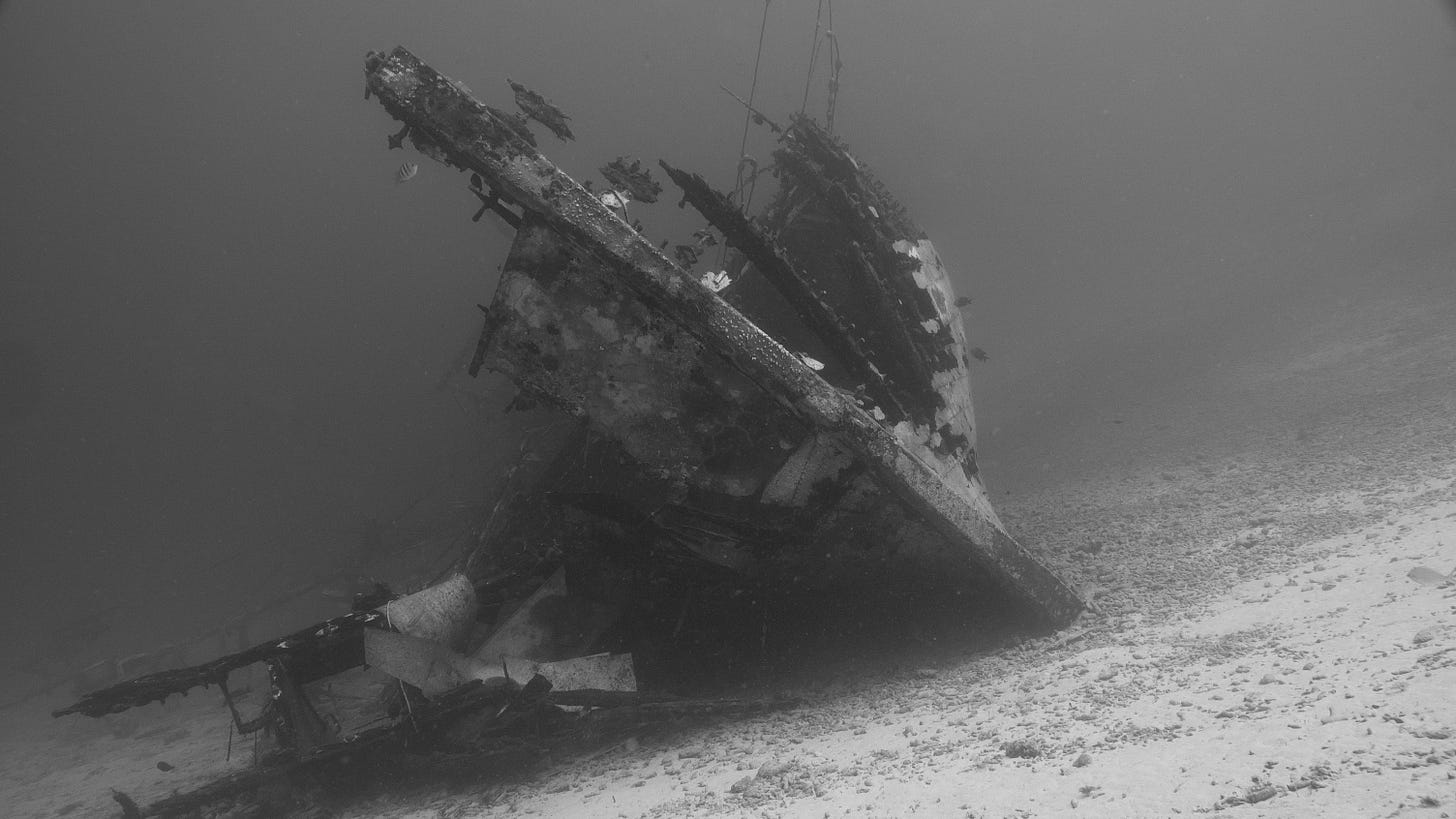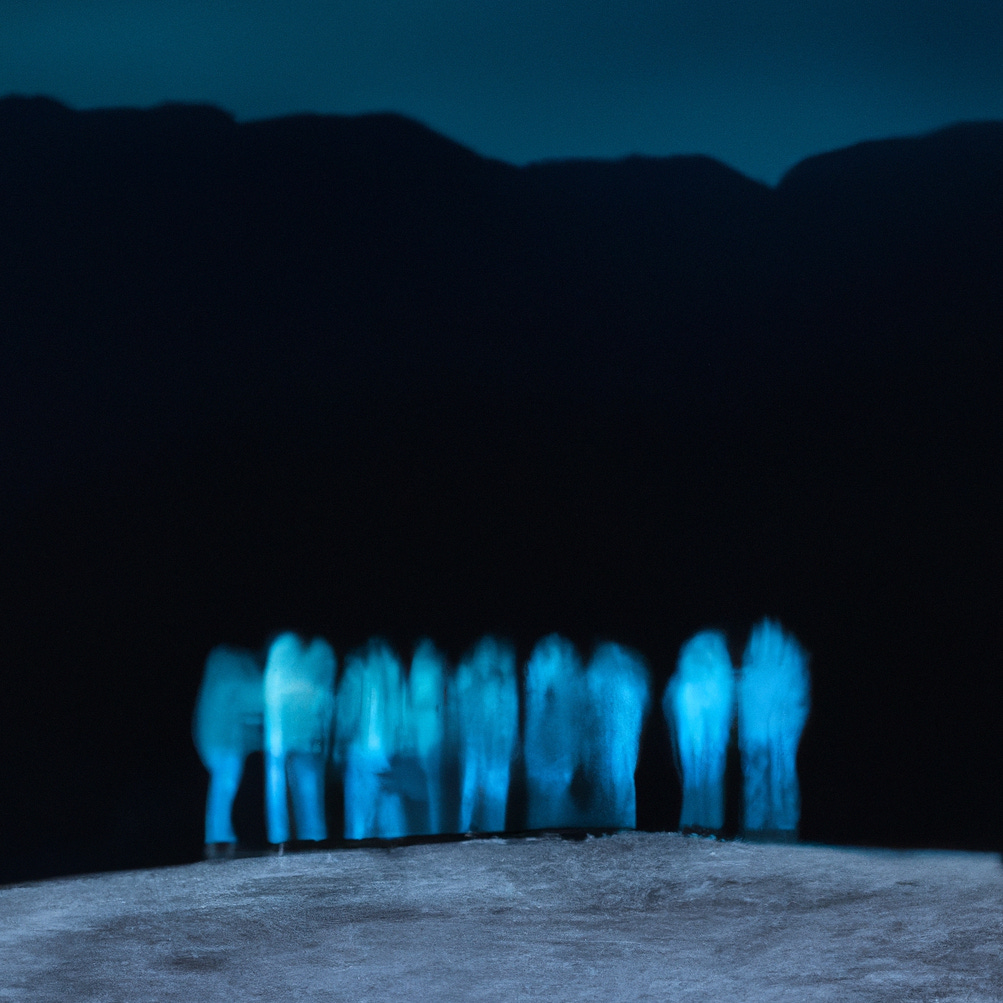I’m still supposed to be on vacation, but this has been simmering in the back of my mind for a few weeks now, and I had a little bit of free time to get it down. Relatively unedited and off the cuff; hope there’s something in here that’s worthwhile.
As of this writing, we’re now about a month out from the Titan submersible disaster. The parallels with the Titanic shipwreck are obvious; in the weeks since the Titan imploded, they’ve been thoroughly addressed in the commentary on the catastrophe. I won’t be contributing anything new by pointing out the similarities in the name, the level of hubris involved, the experimental hull design, etc., etc.
But from a phasmatopian1 perspective—this is irresistible.
I’m sure many readers live in a world in which curses aren’t real. I would suggest that—even in a purely mundane sense, with the metaphysics peeled away—curses are worth considering.
At a very basic level, curses, taboos, and superstitions are checks on hubris. The idea of a curse is a metaphorical warning sign. A curse, real or imagined, cautions short-sighted humans against thinking that they’ve considered all the angles. From an anthropological perspective, these warnings are representations of a truth about reality: no matter how many times we run the numbers, map the terrain, plot a confident course ahead—there will always be something overlooked.
Sometimes these errors are harmless; sometimes they’re fatal.
Symbolism, metaphor, and narrative stick in our brains better than complicated facts and data. Whenever humans need to PAY ATTENTION, a scary story is more effective than a prosaic warning label, and more durable for intergenerational transmission.
Thus, curses, taboos, and superstitions flourish in spaces that are complex and powerful. Sailors are famously among the most superstitious people in history, for good reason: the ocean is unforgiving, and staying alive far out from shore requires constant vigilance. Rather than relying on a faulty memory for the myriad thou-shalt-nots of seafaring, it’s easier to build a curse-shaped container to hold them all.
Even the casual anthropomorphizing of “the ocean is unforgiving” contains a form of taboo: in this framing, the ocean is not just an assortment of dangerous environmental variables, but (metaphorically, at this level) a kind of sentience, actively looking for opportunities to catch the careless unaware.
And for the metaphysically inclined, there are more complicated gyres to consider.
One common understanding of magic is that of probability manipulation. While magical tools that directly alter material reality can be found in some indigenous practices, the vast majority of charms and spells—hunting magic, love magic, war magic, healing magic—are more concerned with changing reality’s mind juuust enough to get the desired outcome.
For example: an invisibility spell that makes the operant completely incapable of reflecting light seems impossible. It violates some of the fundamental laws of physics. But what does “invisibility” really mean, in practical terms? Is it enough to simply remain unnoticed? If the operant is well-concealed, and all that’s necessary to keep them from being seen is for an observer to look away at just the right time—to blink, to be distracted, to be preoccupied with other thoughts—is that not essentially the same as being invisible? How slight of a nudge would reality need in order for that to happen? Do we really understand the mechanics of materiality and consciousness well enough to say that those tiny nudges are completely impossible?
Sometimes a fraction of an inch is all it takes to tip the scales.
And if we’re living in a world in which human operators can generate those tiny nudges—what else can cause them?
The Titanic shipwreck has a weird magic. It captivates people in a way that few other disasters do. While some of its notoriety is inarguably the result of the blockbuster movie from 1997—why did James Cameron spend almost $3 million to make a movie about this shipwreck, instead of, say, the Lusitania? Or the Edmund Fitzgerald? And what drove audiences to make it one of the most profitable films in history?
Even the recent disaster is proof of the Titanic’s unnatural attraction: what possessed four people to pay huge amounts of money for the privilege of being crammed into a glorified oil drum—to travel two miles below the surface of the ocean, into crushing darkness—just for a chance to see some vaguely ship-shaped shadows through a porthole the size of a dinner plate?
What drove the ringleader of this suicidal grift to choose this place to trial his cut-rate submersible design—rather than any number of picturesque tropical shipwrecks, in waters not guaranteed to atomize the human body in the event of a malfunction?
If we were being Gothic about it, we might suggest that it was the spirits of all those unburied dead, drifting in the dark: reaching out, jealous of the living, scorning the same entrepreneurial hubris that killed them.
Or we could just say that reality has its own memory. Like attracts like. Giving your science-fair submarine an almost identical name to the doomed ship, and then driving it into those same haunted waters, is practically begging for trouble. It doesn’t matter if your enchantments are accidental or deliberate.
Sometimes a fraction of an inch is all it takes to tip the scales.
This also reminds me of the Dyatlov Pass incident. For decades, there were countless explanations for this mysterious tragedy, ranging from the macabre to the otherworldly. A more scientific hypothesis was put forward in 2021: despite the precautions that the experienced group of mountaineers took in establishing their camp on the fateful night, a slab avalanche formed above their tent, flattening their shelter and forcing them out to die in the bitter cold.
This extremely rare phenomenon was caused by a perfect storm of otherwise-unlikely conditions, including the dugout that the group cut into the snow. They did everything by the book, built a weathertight shelter well clear of an avalanche’s expected path—and were killed by the environmental conditions that they helped to create. A few fractions of an inch made the snow build up juuust enough—before its mass slid down the slight incline above the tent, crushing down on the hikers with the weight of a truck. It happened in just such a way that the evidence of this unlikely event blew away on the wind, leaving only corpses and a mystery for rescuers to discover.
Case closed, as far as material reductivism is concerned. And a slab avalanche is probably the correct explanation, instead of yetis or UFOs or KGB assassins.
But from a phasmatopian perspective, it’s worth noting that the group of hikers had just been climbing a mountain that the indigenous people considered spiritually significant. Whether it was sacred or haunted (or both) is unclear from the available sources; nevertheless, the local people had taboos against traveling through these places. And here comes this group of civilian tourists, traipsing merrily across a landscape that they thought they understood; if they knew about the taboos at all, they probably regarded them as primitive superstition. Days later, they were killed in a freak accident with no survivors.
How do you think a curse works?
For new readers who are still unfamiliar with this term, it’s a pet concept I’ve been nurturing for some time now. The short version is “the perspective from outside the narrow aperture of material reductivism, in which ‘spirits’ and other metaphysical manifestations are some kind of real.” It’s adjacent to animism—but in a spookier, gestalt sense. I’ll have much more to say about this in a future post.





here's a fun, spooky tidbit: i generated the image at the end of this post in Dall-E 2 AI using the prompt "photograph of a group of translucent human figures at night on the side of a mountain." that was the entire prompt. obviously, i had the Dyatlov incident in mind at the time.
how many figures do you count in the image?
i see nine.
there were nine victims at Dyatlov Pass.
pure coincidence, of course.
welcome to Phasmatopia.
Great post! Have you given thought to the invocation of the concept of 'Titan' in the names. After all these were the gods defeated by the Olympians in the Titanomachy.
Perhaps invoking the defeated enemies of the Olympians whilst simultaneously pushing the limits of human hubris wasn't such a great idea.
I haven't seen any commentary on this point but it jumped out at me straight away.
Keep up the great work.